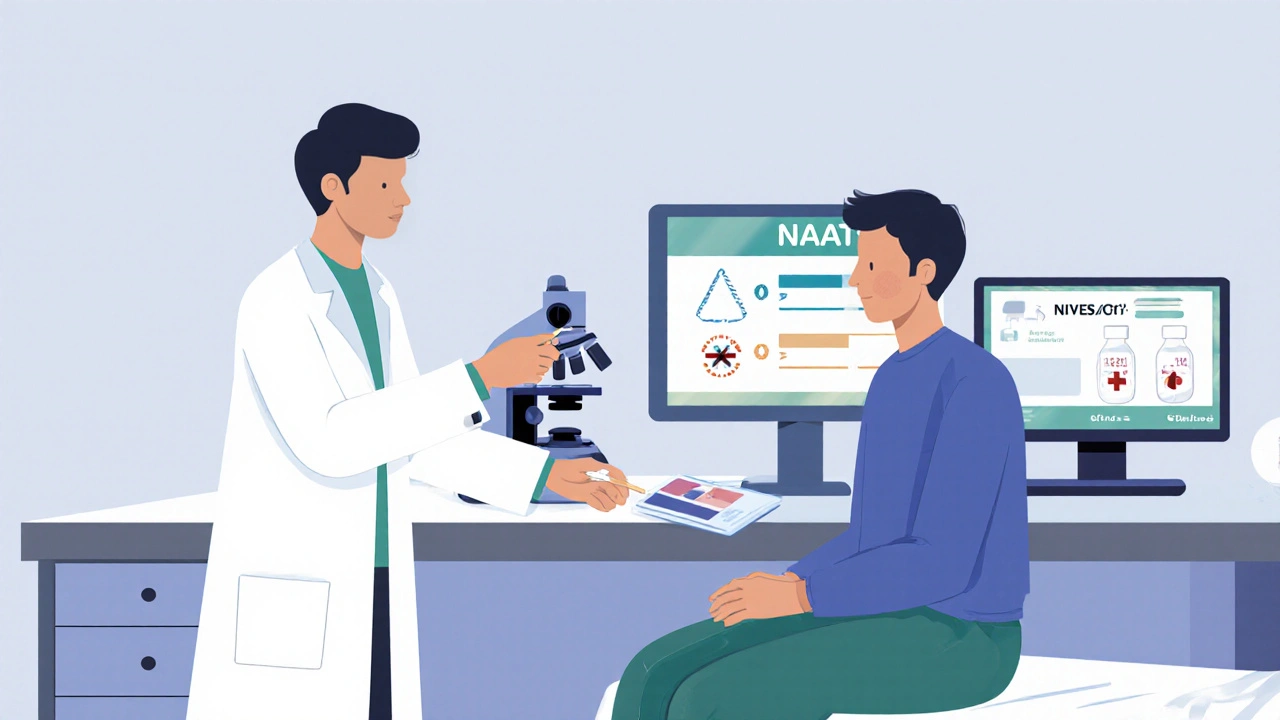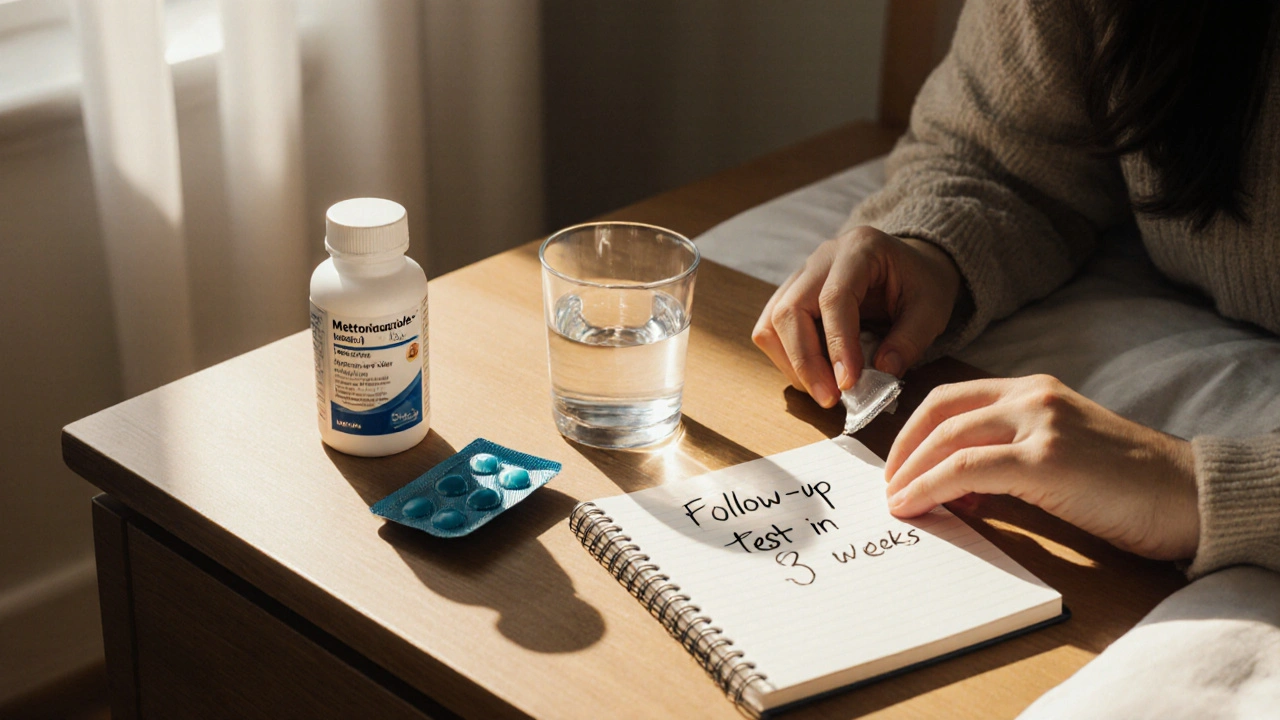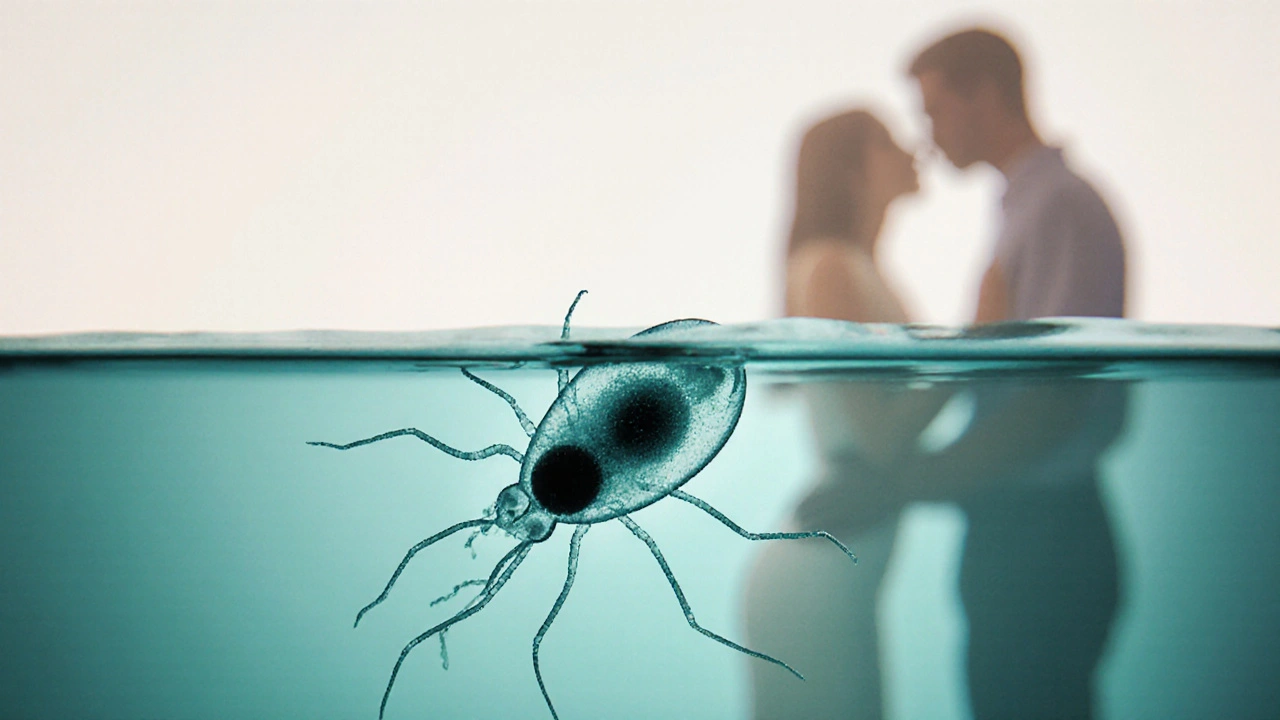Trichomoniasis Treatment Calculator
Treatment Options
Select your situation to receive personalized treatment guidance
Your Treatment Plan
Select your options above to see your personalized treatment plan
When it comes to sexual health, Trichomoniasis is a common sexually transmitted infection caused by the protozoan parasite Trichomonas vaginalis. Understanding Trichomoniasis is essential because it can affect anyone who is sexually active, and its subtle signs often go unnoticed.
What Exactly Is Trichomoniasis?
Trichomoniasis belongs to the broader group of sexually transmitted infections (STIs). Unlike bacterial STIs such as chlamydia, this one is caused by a single‑celled parasite that thrives in warm, moist environments like the vagina or urethra. It is the most frequently reported non‑viral STI worldwide, with the World Health Organization estimating over 150 million new cases each year.
Typical Symptoms - And Why They’re Easy to Miss
Both men and women can contract the infection, but symptoms differ:
- Women: frothy, yellow‑green vaginal discharge, itching, burning during urination, and occasional abdominal pain.
- Men: often no symptoms, but may notice urethral discharge, irritation, or a mild burning sensation after urination.
Because many people experience mild or no symptoms, routine screening becomes crucial, especially for those with multiple partners or a history of other STIs.
How Is It Transmitted?
The parasite spreads through genital contact during vaginal, anal, or oral sex. It cannot survive long outside the human body, so transmission usually requires direct contact with infected secretions. Using a condom can dramatically cut the risk, though the parasite can sometimes reside in areas not covered by a latex barrier.

Testing Options - Choosing the Right One
Accurate diagnosis hinges on proper testing. Two main laboratory methods dominate:
| Test | Sensitivity | Turnaround Time | Typical Cost (USD) | Sample Required |
|---|---|---|---|---|
| Wet mount microscopy | ≈ 50‑60% | Same‑day | $15‑$30 | Vaginal or urethral swab |
| Nucleic acid amplification test (NAAT) | ≈ 90‑95% | 1‑3 days | $50‑$100 | Swab or urine |
The older wet mount is quick and cheap but misses many infections, especially in women with low parasite loads. Modern clinics increasingly favor NAAT because of its higher sensitivity, though the price and lab availability can be limiting factors.
Treatment Options - What to Expect
Once diagnosed, the infection is highly treatable with antibiotics. The first‑line drug is metronidazole, taken as a single 2‑gram dose or a 7‑day 500mg twice‑daily regimen. An alternative is tinidazole, which can be administered as a single 2‑gram dose and often has fewer side effects.
- Both drugs can cause nausea, a metallic taste, and, rarely, neurological symptoms.
- Alcohol must be avoided for at least 24hours after metronidazole and 48hours after tinidazole to prevent a severe reaction.
- Pregnant women should discuss treatment with a healthcare provider; metronidazole is generally considered safe in the second and third trimesters.
It’s vital to treat all sexual partners at the same time, even if they feel fine. Reinfection rates climb above 20% when only one partner receives medication.
Preventing Future Infections
Prevention revolves around three practical steps:
- Consistent condom use during every sexual encounter.
- Regular STI screening-especially if you have new or multiple partners. Many clinics now offer a single‑visit “STI panel” that includes NAAT for trichomoniasis.
- Open communication with partners about test results and treatment history.
Reducing the infection also cuts the risk of acquiring or transmitting HIV. Studies have shown that trichomoniasis‑related inflammation can double the likelihood of HIV transmission during sex.

Complications You Shouldn't Ignore
Left untreated, trichomoniasis can lead to:
- Increased susceptibility to other STIs, including chlamydia and gonorrhea.
- Prenatal complications such as preterm birth or low birth weight if a pregnant woman is infected.
- Persistent pelvic discomfort and, in rare cases, infertility due to chronic inflammation.
Because the parasite often co‑exists with bacterial vaginosis, clinicians may need to address multiple infections simultaneously.
Partner Notification and Follow‑Up
Notify all recent sexual partners within the past 60days. Many health departments offer anonymous notification services to protect privacy. After treatment, a follow‑up test-preferably a NAAT-should be performed about three weeks later to confirm eradication.
Quick Checklist for Managing Trichomoniasis
- Get tested if you notice unusual discharge or irritation.
- Ask your clinician which test (wet mount or NAAT) is best for you.
- If positive, take the full course of metronidazole or tinidazole as prescribed.
- Ensure ALL sexual partners are treated at the same time.
- Practice consistent condom use and schedule regular STI screenings.
Frequently Asked Questions
Can men have symptoms of trichomoniasis?
Most men are asymptomatic, but some experience urethral discharge, mild itching, or a burning sensation after urination. Because symptoms are subtle, men often remain unaware of the infection.
How soon after exposure can trichomoniasis be detected?
The parasite can be identified as early as 5‑7days after exposure using a NAAT. Wet‑mount microscopy may require a higher parasite load, so early detection is less reliable with that method.
Is it safe to get pregnant after treatment?
Yes. Successful treatment eliminates the parasite, and most clinicians recommend waiting until the follow‑up test confirms cure before attempting conception. This reduces the risk of preterm birth associated with active infection.
Can condoms completely prevent trichomoniasis?
Condoms greatly lower the risk, but they don’t cover all potential sites of infection (e.g., the scrotum or labia). Combining condom use with regular testing offers the best protection.
What should I do if my partner tests negative but I’m positive?
False negatives can happen, especially with wet‑mount testing. It’s advisable for the partner to repeat testing after a week, preferably using a NAAT, and consider preventive treatment if re‑exposure is likely.

Kristen Moss
October 14, 2025 AT 13:23Look, folks, trichomoniasis ain't some foreign problem-it hits us Americans right in the bedroom, and we gotta face it head‑on, no apologies.
Rachael Tanner
October 15, 2025 AT 06:46Just so you know, the NAAT test catches about 95% of infections, while the old wet‑mount only spots half. If you want a reliable result, ask for the nucleic‑acid test.
Debra Laurence-Perras
October 16, 2025 AT 10:33Hey everyone, remember that knowledge is power-getting tested and treating early can save you from complications and keep your relationships healthy.
dAISY foto
October 16, 2025 AT 11:56Yo, don't let fear grind you down! 🌟 Even if you feel a lil weird, jumping on treatment early is like unlocking a secret level in the game of life-total win!
Take it step by step, and you'll bounce back faster than you think.
Ian Howard
October 17, 2025 AT 14:20Metronidazole or tinidazole are the first‑line meds; a single 2‑gram dose works for most, but if you’ve felt nausea before, the 7‑day 500 mg twice‑daily course is gentler. And yes, steer clear of alcohol-24 hours for metronidazole, 48 hours for tinidazole.
Chelsea Wilmer
October 18, 2025 AT 18:06When you consider the sheer prevalence of trichomoniasis-over 150 million new cases worldwide each year-it becomes clear that this isn't a niche concern but a public‑health reality that demands our attention. The parasite, Trichomonas vaginalis, thrives in warm, moist environments, making both men and women vulnerable during any type of genital contact. Women often experience frothy, yellow‑green discharge, itching, and a burning sensation, yet some may notice nothing at all, which is why routine screening is essential. Men, on the other hand, are frequently asymptomatic, though occasional urethral discharge or mild dysuria can occur, silently perpetuating transmission. Diagnostic options have evolved dramatically: while the traditional wet‑mount microscopy offers a quick, inexpensive look under a microscope, its sensitivity hovers around only 50‑60%, missing many infections. In contrast, nucleic‑acid amplification tests (NAATs) achieve a sensitivity of 90‑95% and provide results within a few days, albeit at a higher cost. Once diagnosed, treatment is straightforward-metronidazole or tinidazole, with dosing adjusted based on pregnancy status and prior side‑effects. It is crucial to avoid alcohol for the specified period-24 hours after metronidazole, 48 hours after tinidazole-to prevent a disulfiram‑like reaction. Equally important is the simultaneous treatment of all sexual partners; failure to do so leads to reinfection rates exceeding 20 %. Beyond the immediate discomfort, untreated trichomoniasis can increase susceptibility to HIV, cause preterm birth in pregnant women, and contribute to chronic pelvic pain or infertility. Therefore, regular STI panels that include NAAT testing, consistent condom use, and open communication with partners form the cornerstone of prevention. Finally, a follow‑up test three weeks post‑therapy is recommended to confirm eradication, ensuring that the infection does not linger unnoticed. By staying informed and proactive, individuals can protect their own health and that of their communities.
David Stout
October 18, 2025 AT 19:46Exactly-treating both partners at the same time cuts reinfection rates dramatically, so loop everyone in and stay on top of follow‑up testing.
Pooja Arya
October 19, 2025 AT 21:53It’s downright irresponsible to ignore a transmissible infection; we have a duty to our partners and to society to get screened and treat, otherwise we perpetuate suffering.
Matthew Tedder
October 21, 2025 AT 01:40Take a deep breath, schedule that test, and lean on friends if you need support; you’re not alone in navigating sexual health.
Michael Wall
October 22, 2025 AT 05:26Remember: condoms reduce risk, but they’re not 100% foolproof for trichomoniasis.
Christopher Xompero
October 23, 2025 AT 09:13Bottom line: get tested, get treated.